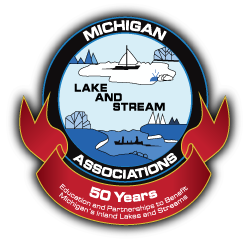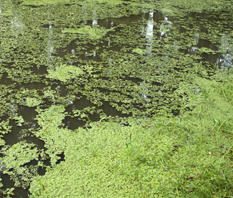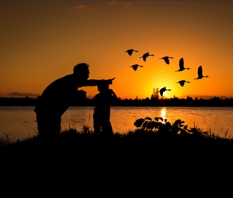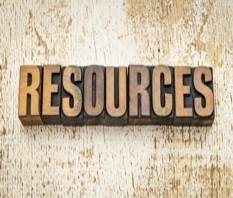Resources for Lake Lovers
The GLQO wants to be a resource for information on water quality issues of interest to our members and others who want to maintain and improve water quality in Michigan lakes. In support of this we have provided below information on other organizations and agencies that are concerned about water quality and what citizens can do to enhance or improve water quality.
Water Quality
- The Michigan Clean Water Corps (MiCorps) is a network of volunteer water quality monitoring programs
 in Michigan. Visit Michigan Clean Water Corps at micorps.net.
in Michigan. Visit Michigan Clean Water Corps at micorps.net. - The MSU Extension website is a great tool to learn about a wide variety of topics. MSU Extension also offers classroom and field-based sessions to help participants to better understand local water resource management planning and program implementation. Learn more about Lake and Stream Leaders
 Institute.
Institute. - GLQO is a member of the Michigan Lakes and Streams Associations. Their website is loaded with information about lakes and lake living in Michigan, especially information about lakescaping. Visit their website here.
Natural Shorelines
- The Michigan Department of Environment, Great Lakes and Energy (EGLE) has a great article on a Natural Shoreline project on Gull Lake itself! See this link for more information.
- EGLE provides valuable information about what homeowners and other lake residents can do to improve their shorelines to reduce erosion and provide habitat for native species. Julia Kirkwood, a Watershed Project Manager for EGLE spoke at the GLQO 2022 Fall Fling about the value of and resources for establishing natural
 lakescapes. You can access the power point for her talk here.
lakescapes. You can access the power point for her talk here. - Shoreline erosion can be a problem for many riparians. To learn more about the benefits of a natural shoreline and best practices visit the Michigan Natural Shoreline Partnership.
- Score the Shore is a habitat assessment program sponsored by the MiCorps that provides a way for lake residents to determine what areas of the lakeshore are healthy and in need of improvement. The GLQO coordinated a Score the Shore for Gull and Little Long Lakes in a few years ago, and plans to repeat this in 2024. To help out with this effort, contact us at info@glqo.net.
Invasive Aquatic Species
 Submerged and emergent plants play an important role in healthy lakes, but increasingly non-native species are invading Michigan lakes are creating problems. The Michigan DNR provides a detailed list of invasive aquatic plants that have been found in Michigan Lakes.The GLQO pays for an annual survey of aquatic invasive species in Gull Lake and are currently monitoring and treating areas where two species – Starry Stonewort and Eurasian Milfoil — have been detected.
Submerged and emergent plants play an important role in healthy lakes, but increasingly non-native species are invading Michigan lakes are creating problems. The Michigan DNR provides a detailed list of invasive aquatic plants that have been found in Michigan Lakes.The GLQO pays for an annual survey of aquatic invasive species in Gull Lake and are currently monitoring and treating areas where two species – Starry Stonewort and Eurasian Milfoil — have been detected.- Michigan State University Extension provides a lot of information about aquatic invasive species and the effects they can have on lakes and streams. You can find a complete listing of these resources and information on what you can do to prevent the spread of these species here.
- The University of Minnesota Extension also had good information on aquatic invasive species, here’s an interesting recent posting about how natural shorelines can prevent the spread of these species.
- For those who want to learn more, there is a field guide and key to Aquatic Invasive Species.
Biological Diversity and Conservation Associated with Lakes
- The Michigan Natural Features Inventory, a part of MSU Extension, has lots of information about natural communities in Michigan, including lakes, wetlands and other aquatic habitats. You can find out more here.
- The Michigan Department of Natural Resources provides information about the animals in lakes and their surrounding watersheds. The MDNR Fisheries Division answers questions about fish populations, stocking, and regulations and the Wildlife Division can provide information about waterfowl, deer, and what animal is digging holes along your shoreline. For more information contact the Plainwell Customer Service Center.




